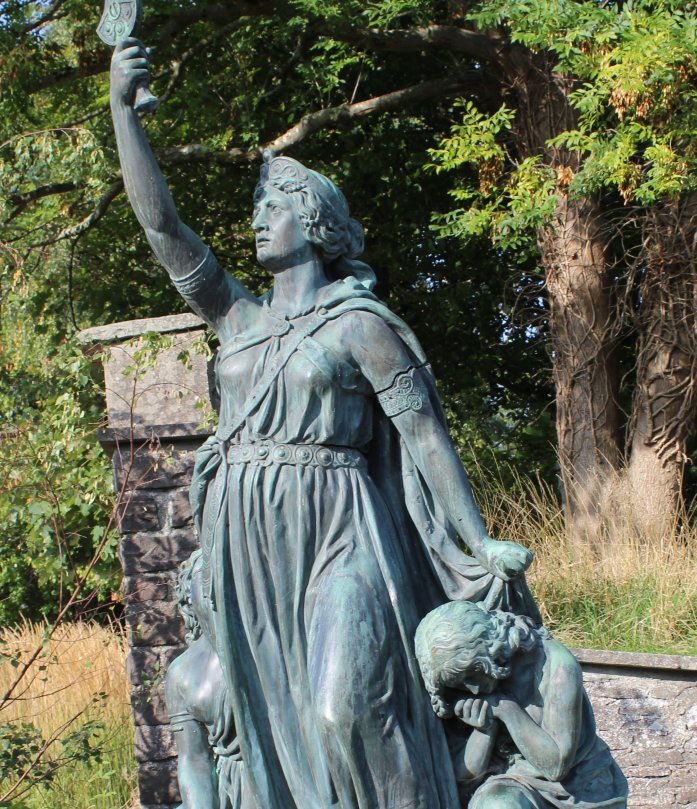The Iceni’s Queen Boudicca Who Revolted Against Roman Rule
A. Sutherland - AncientPages.com - The Iceni people were British Celts who occupied the area of modern Norfolk, Cambridgeshire, and northwest Suffolk. The tribe represented a significant power in eastern Britain during Claudius' conquest of Britain in 43 AD.
1855 Bronze statue of Boadicea (Boudica) and her daughters, at Captain's Walk in Brecon, Powys, Wales; by sculptor John Thomas. Image credit: 14GTR - CC BY-SA 4.0
In 47 AD, the Iceni rose in revolt after the Romans tried to enforce a law forbidding the carrying of weapons and increasing Roman influence on the tribe's affairs; their protest was put down, and Prasagustas was established as a client king.
Prasutagas decided that it would be wise to make his will assigning half of his personal property to the Roman emperor, and so it remained. However, when he died in 61 AD, the situation changed. The king's will was ignored, and the kingdom was annexed.
Boudica, Prasutagas's widow and queen of the Iceni tribe, was publicly flogged, her daughters raped, and the estates of the most prominent Iceni men were confiscated. In 61 AD, Boudicca raised the Iceni and the neighboring Trinivantes tribe in revolt against Roman rule.
She destroyed the invaders and chose Londinium as a critical target for her uprising. On her way to Londinium (modern London), Boudica and her army destroyed Camulodunum (modern Colchester), at that time a settlement for discharged Roman soldiers and the site of a temple to the former Emperor Claudius.
Boudicca's treatment of her enemies was brutal, and she must have given the Romans a terrific scare. One legion was so terrified that they refused to move against her. When the Iceni reached Londinium, they pillaged and burned down the city, killing all remaining inhabitants.
At first, the authorities could not prevent the Boudican revolt's advance. Upon hearing of the uprising, Governor Gaius Suetonius Paulinus hurried from the island of Anglesey off the northwest coast of Wales to Londinium to save the city. However, due to the lack of sufficient forces, he could not. He instead decided to sacrifice the single city of Londinium to save the entire province and gave the signal to abandon the city as soon as possible.
The inhabitants were allowed to accompany him. Only women, old or attached to the place, stayed in the city. An estimated 70,000–80,000 Romans and British were killed in the three towns by those led by Boudica. Suetonius, meanwhile, regrouped his soldiers and, despite being heavily outnumbered, defeated the Britons at the Battle of Watling Street.
The Roman historian Tacitus (56 AD – 117 AD) wrote about what Suetonius told his men before the fight:
"Ignore the racket made by these savages. They are not soldiers - they're not even properly equipped. There are more women than men in their ranks. We've beaten them before, and when they see our weapons and feel our spirit, they'll crack. Stick together. Throw the javelins, then push forward: knock them down with your shields and finish them off with your swords. Forget about plunder. Just win, and you'll have everything."
It was only with some difficulty that the Romans quelled the Iceni uprising. Londinium, the thriving port growing on the banks of the River Thames, was left in ruins. At first, Boudicca's fate was unknown, but later, people began to believe that she took her own life by taking poison rather than falling into her enemies' hands.
The Romans established a new capital in the Iceni lands at Caistor-by-Norwich. No record of the Iceni exists after this point, though legends suggest that many fled west into Wales and eventually settled in Ireland.
By the Middle Ages, Boudica was forgotten. She was not mentioned in "Historia Brittonum" by Venerable Bede, the earliest prose stories "Mabinogion' or Geoffrey of Monmouth's 'History of the Kings of Britain.'
There is a tendency to think of Boudicca as a great patriotic leader of the British, perhaps the first national heroine.
Many others do not consider her particularly appealing character.
Written by – A. Sutherland - AncientPages.com Senior Staff Writer
Updated on August 21, 2024
Copyright © AncientPages.com All rights reserved. This material may not be published, broadcast, rewritten or redistributed in whole or part without the express written permission of AncientPages.com
Expand for referencesReferences:
R. Hingley, Boudica: Iron Age Warrior Queen
Charles River Editors. Londinium
More From Ancient Pages
-
 Lost Knowledge Of Energy And Crystal Technology In Ancient Egypt
Ancient Technology | May 17, 2019
Lost Knowledge Of Energy And Crystal Technology In Ancient Egypt
Ancient Technology | May 17, 2019 -
 Megalithic Giant Tripolye ‘Mega-Structures’ In Large Settlements That Collapsed Around 3650 BC
Archaeology | Oct 1, 2019
Megalithic Giant Tripolye ‘Mega-Structures’ In Large Settlements That Collapsed Around 3650 BC
Archaeology | Oct 1, 2019 -
 Njord: Norse God Of The Seas And Seafarers And His Unhappy Marriage To Skadi
Featured Stories | Jul 10, 2018
Njord: Norse God Of The Seas And Seafarers And His Unhappy Marriage To Skadi
Featured Stories | Jul 10, 2018 -
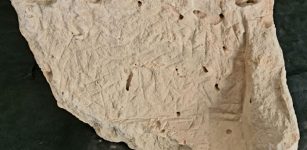 3,500-Year-Old Stone Inscribed With A Curse Against The City’s Governor Discovered In Jerusalem
Archaeology | Jul 13, 2022
3,500-Year-Old Stone Inscribed With A Curse Against The City’s Governor Discovered In Jerusalem
Archaeology | Jul 13, 2022 -
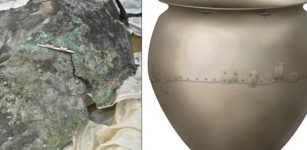 Bronze Age Metal Cauldrons Show What Ancient People Ate
Archaeology | Aug 19, 2023
Bronze Age Metal Cauldrons Show What Ancient People Ate
Archaeology | Aug 19, 2023 -
 Mummified Crocodiles Provide Insights Into Mummy-Making Over Time
Archaeology | Jan 19, 2023
Mummified Crocodiles Provide Insights Into Mummy-Making Over Time
Archaeology | Jan 19, 2023 -
 Babylonians And Sumerians Had Advanced Knowledge Of Astronomy
Civilizations | Feb 28, 2017
Babylonians And Sumerians Had Advanced Knowledge Of Astronomy
Civilizations | Feb 28, 2017 -
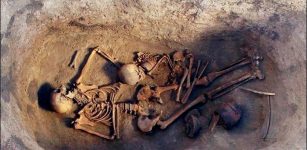 Mystery Of The Ancient Okunev Culture: Skeleton Of 4,500-Year-Old Noblewoman With Links To Native Americans Discovered In Siberia
Archaeology | Sep 9, 2016
Mystery Of The Ancient Okunev Culture: Skeleton Of 4,500-Year-Old Noblewoman With Links To Native Americans Discovered In Siberia
Archaeology | Sep 9, 2016 -
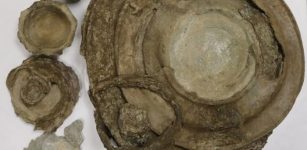 Rare 2,000-Year-Old Roman Hoard Discovered In Suffolk
Archaeology | Jul 5, 2023
Rare 2,000-Year-Old Roman Hoard Discovered In Suffolk
Archaeology | Jul 5, 2023 -
 Ancient Monuments The World Is Not Allowed To See – Reason For Denial? – Part 1
Featured Stories | Aug 24, 2020
Ancient Monuments The World Is Not Allowed To See – Reason For Denial? – Part 1
Featured Stories | Aug 24, 2020 -
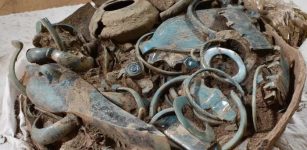 Hundreds Of Exceptional Bronze Age Artifacts Discovered In France Were Probably Offerings
Archaeology | Aug 28, 2021
Hundreds Of Exceptional Bronze Age Artifacts Discovered In France Were Probably Offerings
Archaeology | Aug 28, 2021 -
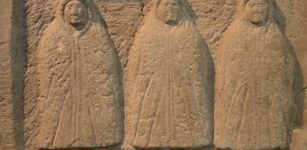 Mystery Of The Hooded Ones – Enigmatic Cloaked Figures
Artifacts | Feb 10, 2020
Mystery Of The Hooded Ones – Enigmatic Cloaked Figures
Artifacts | Feb 10, 2020 -
 Home Of Jesus’ Apostles Found In The Lost Biblical Town Bethsaida
Archaeology | Aug 10, 2017
Home Of Jesus’ Apostles Found In The Lost Biblical Town Bethsaida
Archaeology | Aug 10, 2017 -
 Yamna Culture Started Cannabis Trade 5,000 Years Ago
Ancient History Facts | Aug 6, 2016
Yamna Culture Started Cannabis Trade 5,000 Years Ago
Ancient History Facts | Aug 6, 2016 -
 Ancient DNA And Tombstones Lead Scientists To Black Death’s Source Strain
Archaeology | Jun 15, 2022
Ancient DNA And Tombstones Lead Scientists To Black Death’s Source Strain
Archaeology | Jun 15, 2022 -
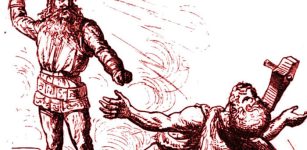 Giant Hrungnir Who Lost The Race And Engaged In A Deadly Duel With Mighty Thor In Norse Mythology
Featured Stories | Sep 19, 2018
Giant Hrungnir Who Lost The Race And Engaged In A Deadly Duel With Mighty Thor In Norse Mythology
Featured Stories | Sep 19, 2018 -
 Secret High-Tech Knowledge Hidden In Ancient Manuscripts And The Mysterious Seven Sky Kings
News | Aug 24, 2021
Secret High-Tech Knowledge Hidden In Ancient Manuscripts And The Mysterious Seven Sky Kings
News | Aug 24, 2021 -
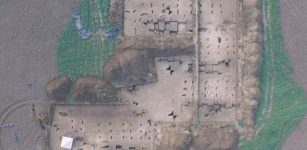 Why Were Neolithic Houses Always Built Counterclockwise?
Archaeology | Jan 13, 2020
Why Were Neolithic Houses Always Built Counterclockwise?
Archaeology | Jan 13, 2020 -
 Rocket Launch Into Space At Sibiu, Romania Took Place In 1555 – Sibiu Manuscript
Ancient Technology | May 29, 2014
Rocket Launch Into Space At Sibiu, Romania Took Place In 1555 – Sibiu Manuscript
Ancient Technology | May 29, 2014 -
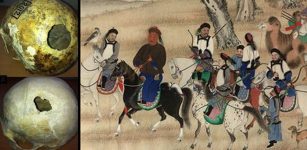 Siberia Had A Major Skull Surgery Center 2,500 Years Ago
Ancient History Facts | Jul 19, 2019
Siberia Had A Major Skull Surgery Center 2,500 Years Ago
Ancient History Facts | Jul 19, 2019

